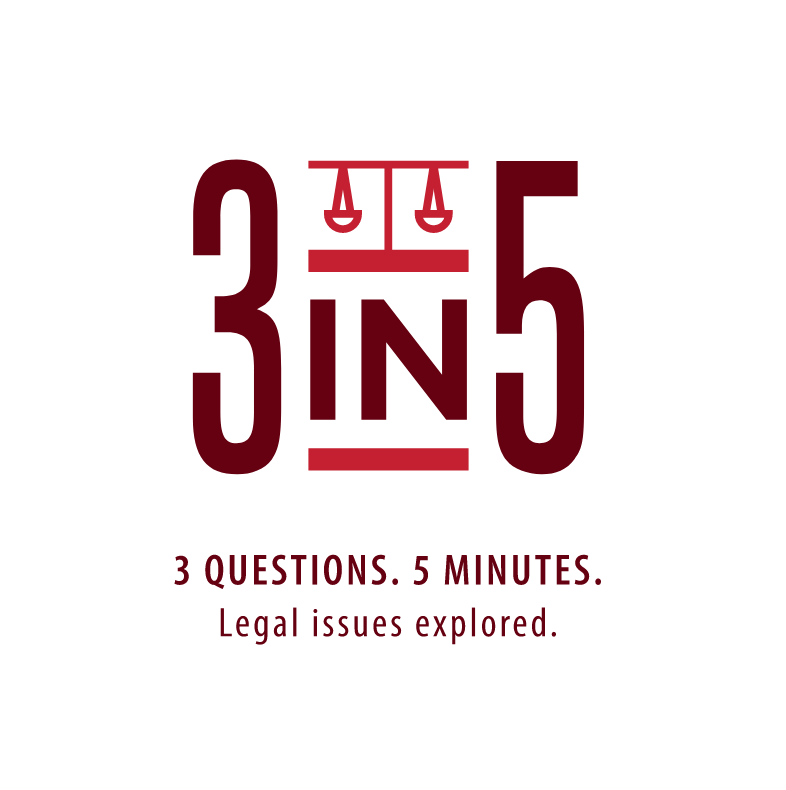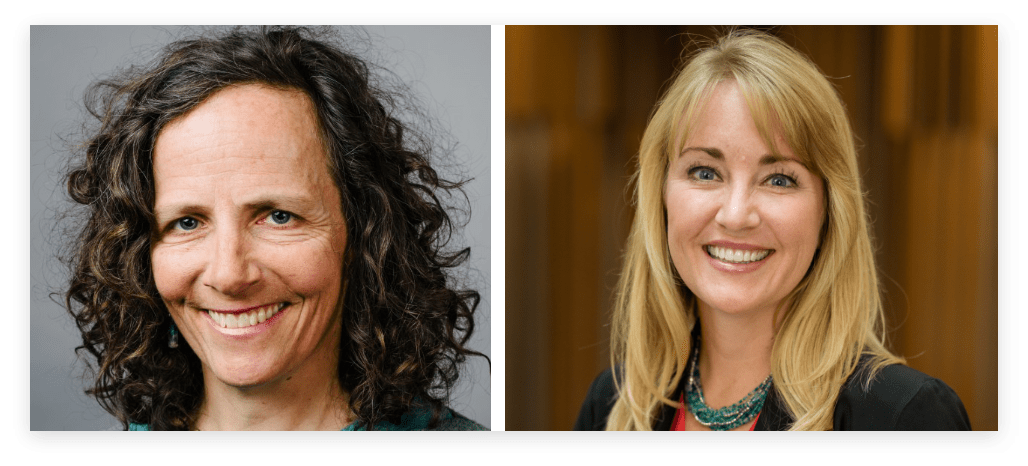
Professor Anna Carpenter: Uncovering what happened in the courtroom when people who are unrepresented attempt to navigate the civil justice system, you know, one way to look at it is, the judge is the only lawyer in the room.
Diane Maggipinto: This is 3 in 5. I’m Diane Maggipinto, the host of this podcast, three questions in five minutes from the S.J. Quinney College of Law at the University of Utah, my guest today:
Professor Anna Carpenter: Anna Carpenter, and I’m a professor at the University of Utah S.J. Quinney College of Law.
Here we go. Over the last 20 years or so, the number of people representing themselves in civil court has exploded something like three quarters of them don’t have a lawyer. The title and topic of your research, which you did with three other law experts, is “Judges in Lawyerless Courts”. What was the focus? And what’s new for public discourse?
I’ll start by giving a little bit of context about civil courts that handle cases like divorces, custody, guardianship debt cases, or housing related cases like eviction. The vast majority of cases involve people who don’t have lawyers.
These are everyday people representing themselves. One of the things we found in our research is that these courts are lawyer-centric. I think a key point that’s important to understand about civil courts: all courts were designed by lawyers, for lawyers. Equally matched parties with legal training. And the design of these systems and who was meant to use them doesn’t match who actually uses them.
Now, that’s fundamentally what this study was about, uncovering what happens in the courtroom when people who are unrepresented attempt to navigate the civil justice system.
Diane Maggipinto: So how did you go about it? What was your method?
Professor Anna Carpenter: We looked at three different court systems across the country. In these courtrooms, we recorded transcripts of 357 hearings involving at least one unrepresentative person. And then we went through a process of coding and somatic development, pulling out what the findings were. The core question is the role of the judge in our civil courts, where most people are unrepresented. A key intervention is sort of a helpful, accommodating judge who provides assistance to litigants.
And, in many ways, it’s an intervention that is just very much driven by necessity and practicality. You know, one way to look at it is, the judge is the only lawyer in the room. Judges have been asked, practically been put in the position, of being the only person available to provide legal assistance.

Diane Maggipinto: You say you were surprised by the results.
Professor Anna Carpenter: We were surprised by the results. There’s a metric called the justice index that ranks states based on the amount of work they’ve tried to do to make courts more accommodating for people without council. And these three jurisdictions fell roughly at the top, middle and bottom. We expected for that reason and some others to see differences.
And instead we saw that judges in many ways, sort of doubled down on legal complexity and that they exercised really tight control over proceedings. Court systems will issue guidelines for judges to say, these are the ways that you should help unrepresented people. For example, explain to litigants what’s going on. Don’t use legal jargon. Don’t say burden of proof. Don’t say prima fascia case. Use plain language. These are not formal requirements. These are all suggestions, best practices for how judges should behave. He saw that judges, in general, gave very limited explanations. They often refused to answer questions that litigants asked them and they use legal jargon and technical language.
And this study reveals something that hasn’t been revealed before. Judges themselves are confused about what they are allowed to do under the rules that do bind them and what they should be doing. And a core feature of the cannons of judicial conduct is that judges must be impartial and unbiased in terms of how they make decisions. But they also need to give the appearance of being unbiased.
That’s one thing that we think is going on. The other two I’ll just touch on briefly. These are very sort of high pressure, high volume dockets. Very often the courtrooms are standing room only, small ,cramped, full of people who are dealing with a very challenging time in their life. And the judge has to clear those cases, for example, in one jurisdiction, in an hour and a half.
The other thing that we noticed, only one party to the case gets some really substantial case development. For people who are asking, there are services available to help them to fill out a petition, to make their legal and factual claims. Judges relied really heavily on that piece of paper, on that pleading, to frame the questions that they asked and the evidence that they would allow on the record.
Diane Maggipinto: What recommendations and suggestions are offered in your research?
Professor Anna Carpenter: We have a lot of reason to think that creating a more rule based system, where judges actually have some concrete requirements about the type of information and accommodation and simplification they need to provide, might move us a little bit farther down the road and actually giving unrepresented people at least some of the assistance that they need .
And in the civil justice context, that advocacy work has really ramped up. So we’re sort of at the beginning of thinking about these issues. Some of the people who care a lot about it are judges in civil courts. They’re the ones who have to deal with this on a day-to-day basis. I think many of them are hungry for guidance. And so I think it is a real possibility that rules could be changed and that we could develop new systems that are more helpful to unrepresented people.
Diane Maggipinto: That’s 3 in 5 from the University of Utah S.J. Quinney College of Law.
